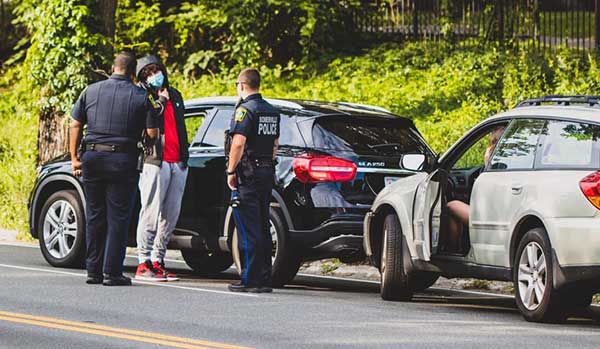
Magnuson Lowell Blog
Each week we post a blog about relevant legal issues. Glance through our various topics to learn more about a particular legal situation.
These articles are for limited informational purposes only and are not, nor are they intended to be, legal advice. You should not rely on this information for your case and should consult with an attorney for advice regarding your individual situation.
Most Recent Posts ...
Posted on: 7/7/2025
Posted on: 6/30/2025
Posted on: 6/23/2025
Posted on: 6/16/2025
Search All Blog Posts
Blog Post Archive Categories
- Mandatory Arbitration - A Great Choice for Small Car Accidents
- Does it Matter that I was Hurt Before My Car Accident?
- Taking the Settlement and Avoiding Trial: The Benefits of Settling Personal Injury Cases
- Supervised Visitation for Parenting Plans: What You Need to Know
- What is a Parenting Coordinator in a Divorce?
- Positive Thoughts After Losing a Family Law Motion
- (Redmond/Criminal Defense) Time Matters for a DUI
- (Redmond/Criminal Defense) Field Sobriety Tests - What Not to Do
- (Redmond/Criminal Defense) - The (Redmond/Criminal Defense) - The Ability to Remain Silent
- Battling Father Time: Crafting Your Legacy with Precision
- Tips for Talking to Your Family About Your Estate Plan
- How to Choose Your Personal Representative for your Will
- What is a Trial Continuance in Washington State?
- Renewing a Domestic Violence Protection Order in Washington State
- Little Known Washington Driving Laws
- Discovery Interrogatories and Requests for Production in Your Divorce
- Splitting Holidays in a Washington Divorce
- The Role of Religion in Washington State Divorce Cases
- Why Expediency is Important After Your Car Accident
- Understanding Independent Medical Examinations (IMEs) in Washington State
- It only takes 3 seconds...
- Gotta love our court system!
- (Redmond/Crazy Lawsuit) The Walking Dead: or Not!
- (Redmond/Crazy Lawsuit) Here Comes Football - and Litigation
- Honoring Our Heroes: A Thank You to All Who Have Served!
- Happy Halloween from Magnuson Lowell
- 10 Tips You Need To Know Before Getting On A Motorcycle
- Top 10 Tips You Need To Know Before Getting On A Motorcycle
- Top 10 Tips Riders Need To Know Before Getting On A Motorcycle
- In a Car Collision...Now What?
Who is at Fault for a Car Accident?

Whether a rear-end collision or a T-bone impact, involvement in a car accident will surely ruin your day. The only thing worse than being injured in an auto collision is being at fault for causing that crash. Washington law leaves some wiggle room for juries to determine fault. There is a subjective nature to almost every determination. If you were involved in a motor vehicle accident, it is important for you to understand your rights and responsibilities to ensure you are not manipulated by a shady insurance company.
The Negligence Standard
Every auto accident case hinges upon a determination of negligence. In other words, were the drivers involved in the collision negligent in acting (or omitting from action)? While negligence is a legal term of art, there is usually some common sense understanding as well. For example, it may be easy to determine negligence in the following circumstances:
- The rear driver failed to notice traffic slowing and crashed into the rear of the vehicle ahead.
- A vehicle careened through a red light (with evidence!) colliding with an intersecting driver.
- A car passed through a crosswalk impacting a pedestrian who waited for the walk signal.
Most car accidents will have some minimal question as to liability, but ultimately in a civil lawsuit, the issue will be trivialized by the fight over the injured plaintiff’s damages.
Contested Liability
Sometimes, the questions as to negligence are more difficult to ascertain. These collisions may seem simple, but a lack of evidence creates questions of fact. Take the example from above. What if Driver A and Driver B both claim to have had the green light in a four-way intersection accident? The liability determination may come down to the credibility of the witness because there are no external facts to establish which driver actually had the right-of-way.
Also consider the situation of the pedestrian in the crosswalk. Let’s instead assume that there was no walk signal, but the pedestrian was still in a crosswalk. Perhaps the driver argues that the pedestrian quickly darted out into the street unexpectedly, was drunk and stumbled into their way, or otherwise generally had the last clear opportunity to avoid the impact. A jury may be left to wonder whether the driver or pedestrian was at fault.
Comparative (Joint) Fault
Washington courts have created law that allows more than one party to be at fault for an auto collision. This comparative fault analysis is performed by the jury as part of a trial and is often relied upon by defendants and insurance companies as part of formal negotiations. In essence, the jury will determine what percentage of fault is attributable to each party and then allocate that percentage of the total damages to each party.
For example, if the pedestrian was injured in our intersection collision above and sued the driver for damages, a jury might decide that the pedestrian was 25% at fault for their decision to walk in front of the car. Once that determination is made, the jury will determine the pedestrian’s total damages including medical expenses, wage loss, out of pocket costs, and non-economic damages like pain and suffering. If the total damages were $100,000 then the driver defendant would only owe $75,000, which was their percentage of liability.
Don’t Let Insurance Companies Manipulate Your Claim
Car insurers know the law, and they will regularly use that power differential to their advantage. Personal injury attorneys exist to restore that balance of power in auto accident claims. Insurance companies may still play hardball and they might still deny responsibility. With an experienced attorney by your side, they will no longer be able to trick you into settling your case short. The personal injury attorneys at the law offices of Magnuson Lowell PS are ready and willing to help you protect your claim from the insurance carrier. Call today for a free case evaluation.




